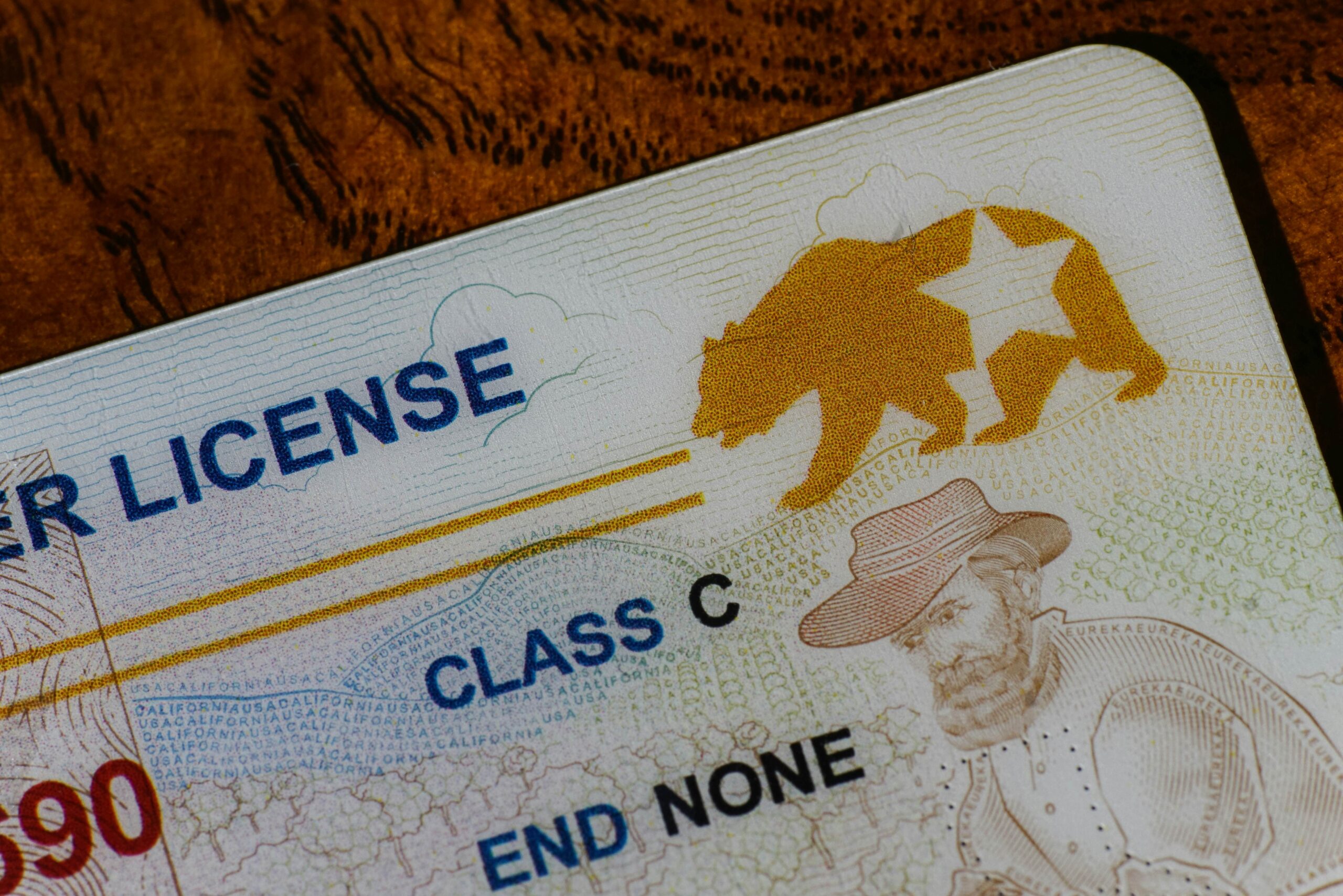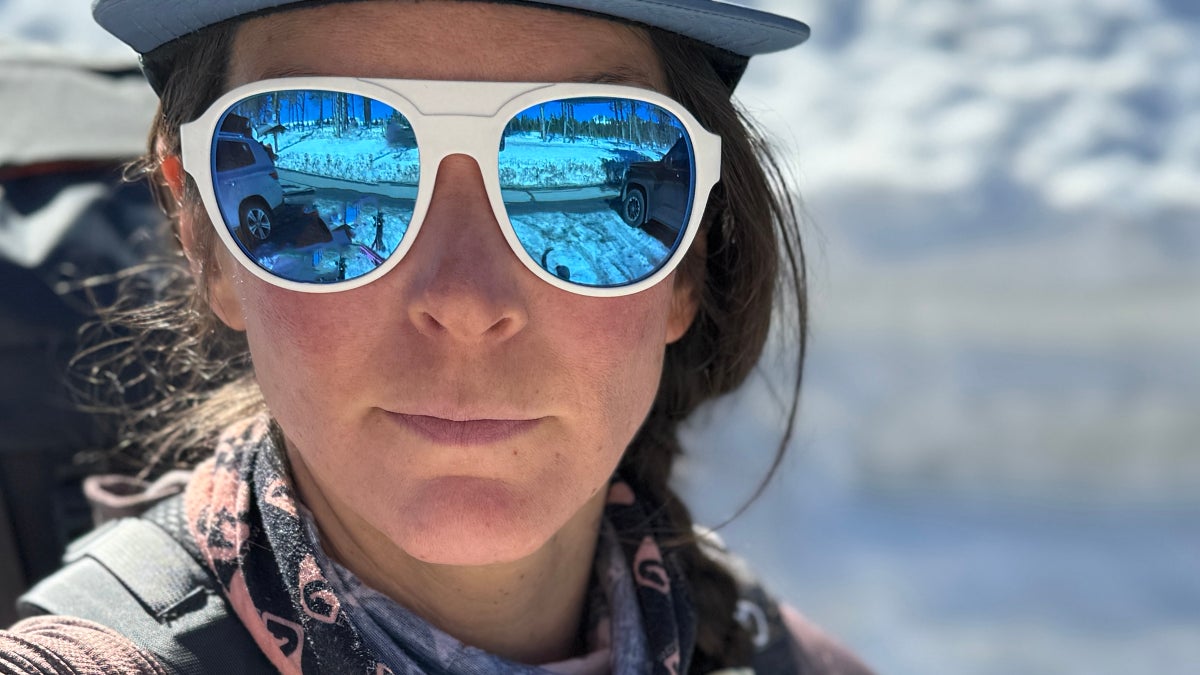
Finding the perfect pair of sunglasses is not easy. You need shades that fit your face and stay in place even when you’re doing something active like jogging or paddling. They should be athletic—breathable, with premium optics and durable construction—so you can be active in them, but not so overly techy looking that you can’t wear them on a stroll around town.
We asked 11 Lake Tahoe, California-based testers to help us narrow down dozens of sunglasses (81 in total, to be exact, tested over the past 12 months) to find the ones that performed the best for a wide range of year-round activities. We put these sunglasses to the test while Nordic skiing, road tripping, trail running, rock climbing, and more. This collection of sunglasses represents our favorites for every type of outdoor play.
Update April 2025: We selected new winners in eight categories and updated prices on eight models that are still available and continue to stand out among all the sunglasses we’ve tested.
At a Glance
- Best Oversized: Dragon Amped ($150-160)
- Most Lightweight: Scott Stride ($120)
- Best Après Glasses: Shady Rays Allure ($59)
- Best Budget Shields: Knockaround Campeones ($55)
- Best Full Coverage: POC Devour Glacial ($270)
- Best for Swapping Lenses: Tifosi Moab ($80)
- Best Glacier Glasses: Revo Himalaya ($329)
- Best When On Water: Bajio 12 South ($259)
- Best for Cycling: Zeal Harbinger ($249)
- Best for Running: Julbo Density ($250)
- Best in Mixed Light: Glade Ramble ($159)
- Most Fun: Blenders Millenia X2 ($59)
- Best Ventilation: Oakley Sutro Lite Sweep ($202)
- Best Casual Shade: Kaenon Ojai ($150)
- Most Versatile: Smith XC Sunglasses ($175)
- Best Under $25: Goodr OG ($25)
- How to Choose Sunglasses
- How We Test
- Meet Our Lead Testers

Best Oversized
Dragon Amped
$150-160 at Dragon $118 at Designer Optics
Lens: Non-polarized polycarbonate
Frame shape: Shield
Fit: Large to extra large
Pros and Cons
⊕ Full-coverage eye protection
⊕ Fun frame and lens colors for a style-forward look
⊕ Exceptionally comfortable fit over the nose
⊗ Too big for small faces
Dragon took cues from the brand’s top-selling DX3 Goggles to create the shape and style of their first-ever shield sunglasses, the Amped. These massively oversized sunglasses give you the full-coverage feel of a wrap-around goggle but in a surprisingly lightweight, easy-to-wear package. We first used these shades while mountain biking and sitting on the back of a wakesurfing boat, but found they worked just as well for Nordic skiing and hiking, too. Be warned: These are attention-getting glasses; you’ll stand out in the crowd.
Testers liked that the Amped didn’t pinch at the nose—it comes with a wide nose bridge—and had a super comfortable feel, but those with smaller faces felt a bit overshadowed. “I think these are too big for my face, but I want to wear them anyway because I feel cool in them,” one tester said. The indestructible polycarbonate lens has Dragon’s signature Lumalens technology, which optimizes color and contrast, and effectively boosts depth perception while blocking 100 percent of UV rays.
The frame is made from a plant-based resin, a nice touch if you’re trying to eliminate excess plastic from your life. The base price of $150 gets you the smoke black version, or pay $10 extra for a flashier-colored Ion lens.
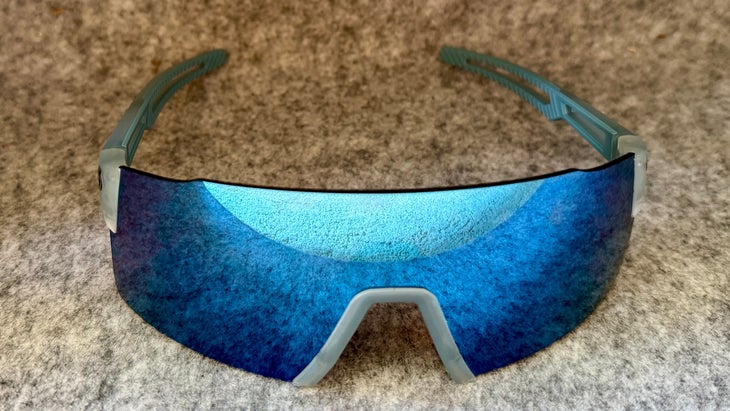
Best Ultralight
Scott Stride
Lens: Toric
Frame shape: Frameless square shield
Fit: Medium
Pros and Cons
⊕ Ample field of view
⊕ Featherweight in feel
⊕ Breathable rubber nose pad for sweaty pursuits
⊗ You might snap them if you accidentally sit on them
⊗ Red lens color wasn’t for everyone
The Scott Stride’s toric lens (shaped like the edge of a donut) didn’t seem noticeable at first, but eventually, we realized we had more peripheral vision than we’re used to without suffering from a bubble-shaped lens that distorts vision. For sports where seeing clearly makes a big difference—like road cycling, mountain biking, and trail running—a toric lens can help you take in the whole picture of the terrain ahead. One tester called them futuristic and praised their non-obstructed view. “The lens provided ample coverage and great clarity in a comfortable, non-slip fit,” he said.
The Stride is built frameless for the fast-and-light crew, like uphill skiers, marathon runners, and backpackers. It tips the scales at a mere 27 grams—you won’t even feel it on your face. Plus, the pliable temples fit perfectly under bike and ski helmets. The glasses come with two lens color choices: a white or a red chrome. The red blocks more intense rays but it’s a little jarring to look through as it makes the world look like it’s been dyed in strawberry Kool-Aid; opt for the white lens if you want a more toned-down, everyday look.
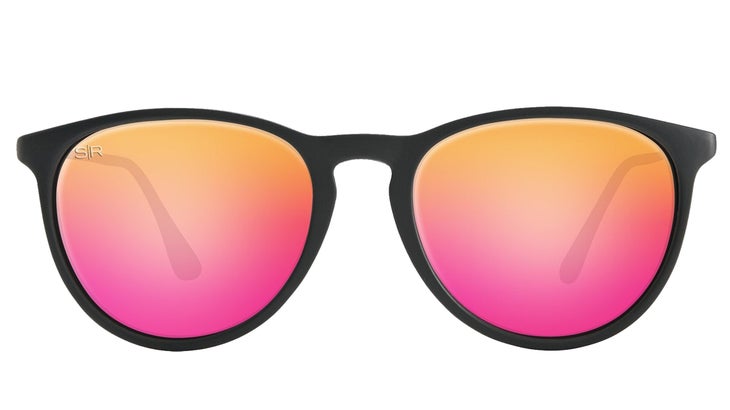
Best Après Glasses
Shady Rays Allure
Lens: Polarized, choose from seven lens colors
Frame shape: Round
Fit: Small to medium
Pros and Cons
⊕ Resilient, heavy-duty feel
⊕ High-quality lens for its price
⊗ Not as sporty as other glasses on this list
⊗ Jostled during high-impact activity
We put the Shady Rays Allure to the test on hikes and light runs and found it satisfactory, albeit lacking the best stay-put feel in the group. But where it really shone was afterward. Testers wore these shades on a sunny deck after spring skiing, tailgating post bike ride, and on sunset dog walks along the beach. Thanks to sturdy metal temples, the Allure feels hefty and unbreakable, despite its delicate look. “A little on the heavy side,” one tester said, “but that also made me feel like I could stash this in my jacket pocket while skiing and not worry about damaging it.”
The polarized lens, which comes in mirrored and non-mirrored options, was high quality given its relatively low price (it’s not easy finding a good polarized lens for under $60) and got the job done even on snow and water in bright sun. The diminutive, rounded frame makes these more suited to those with smaller faces. Shady Rays calls them women’s frames, but our male testers were equally happy in them. They’re a nice contrast if you’re not into the big, oversized shield look that’s so prevalent these days.
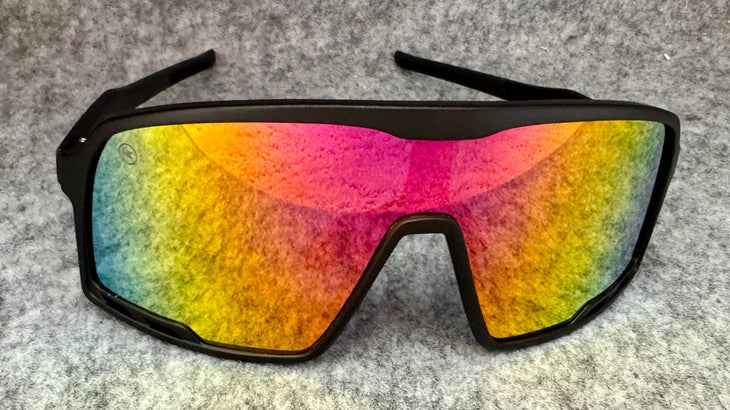
Best Budget Shields
Knockaround Campeones
Lens: Non-polarized polycarbonate
Frame shape: Shield
Fit: Medium to large
Pros and Cons
⊕ Affordable and high performing
⊕ Super lightweight
⊗ Not as comfortable as other glasses
⊗ Less effective at cutting glare on water
Unless you’re deep-sea fishing or lake kayaking, you actually don’t need a polarized lens, which helps cut glare from flat, reflective surfaces like water and roads. The Knockaround Campeones come with intentionally non-polarized lenses to allow for more depth perception, higher contrast, and less eye fatigue during non-water-based activities where glare isn’t an issue. (Plus, not having polarization keeps the price down.)
These were our testers’ favorite shields in the lower price bracket. We wore them Nordic skiing, backcountry skiing, and road running, and they stayed put on our faces during all of those activities, mostly due to an adjustable rubber nose pad that gives you a custom fit. Plus, unlike some sunglasses that show every morsel of sweat and sunscreen smudged across the lens and require constant cleaning, these stayed mostly clean despite heavy use, thanks to an oil-resistant lens treatment. “I sweat in them all day without dealing with greasy smudges. I call that a win,” one tester said.
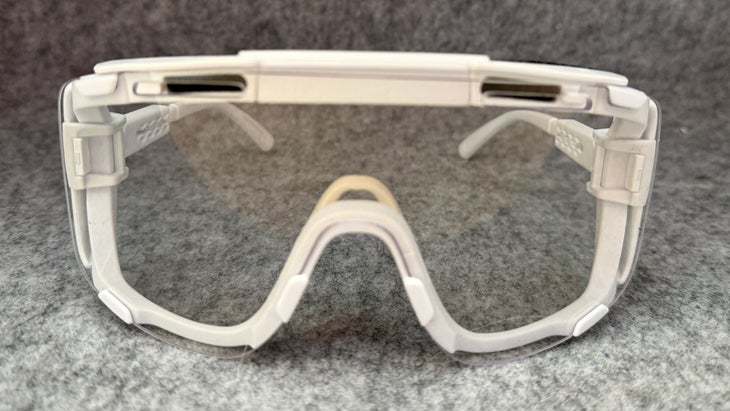
Best Full Coverage
POC Devour Glacial
$270 at Backcountry $240 at POC
Lens: Comes with two interchangeable lenses
Frame shape: Oversized shield
Fit: Medium to extra large
Pros and Cons
⊕ Fits like sunglasses, performs like goggles
⊕ Zero fogging
⊗ Lenses were clunky to swap out
⊗ A little overbuilt for casual wear
The POC Devour Glacial is based on the design of POC’s top-selling Devour glasses, used mostly by downhill mountain bikers, but has additional features that make them more suitable for snow and mountain travel. The Devour Glacial comes with lenses you can swap out, side shields for added protection, and the same color-sharpening lens technology as POC’s ski goggles. Testers wore them backcountry skiing in place of goggles, and they did the job of both breathable sunglasses on the skintrack uphill and goggles for wind protection on the way down. “Why carry more stuff if you don’t have to?” one tester said. “This is the ultimate two-in-one tool.” Even our more skeptical testers were converts: “I would usually never ski down in a pair of sunglasses, but these are not normal sunglasses.”
Since they come with a dark full-sun lens and a completely clear lens, one tester figured: night skiing? She took them on a night backcountry tour under a full moon and the crisp, clear lens and wide field of view were perfect. You’re likely not going to want to wear these shades around town afterward—they look like techy lab glasses. If you want more of an everyday style with similar features, consider POC’s more streamlined Devour instead.
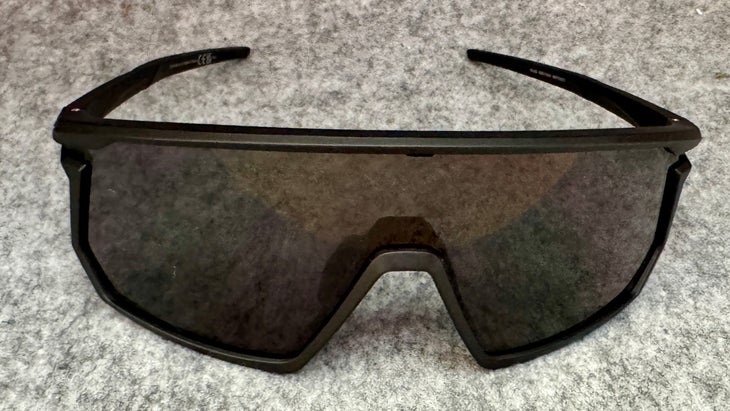
Best for Swapping Lenses
Tifosi Moab
Lens: Comes with three interchangeable polycarbonate lenses in different tints
Frame shape: Shield
Fit: Medium to large
Pros and Cons
⊕ Comes stock with three lenses
⊕ Quick and easy to swap lenses
⊕ Lightweight at just 31 grams
⊗ Some fogging issues, despite ventilation system
Not everyone wants to spend $250 on a pair of sunglasses that they may leave on the roof of their car. Tifosi gets that. The brand somehow manages to find the sweet spot of high-performing, good-looking glasses that don’t cost more than your monthly phone bill. The Tifosi Moab, which debuted in fall 2024, is one of their higher-end sport shields, but it still runs you less than $80. And it comes with not one but two extra lenses, making it even more of a bargain. We mostly wore the dark lens on sunny days Nordic skiing and running, but a lower-light lens and a clear lens came in handy while running at dusk. “Rarely do I find a lens that shines in all conditions,” one tester said. “I tried these in full sun, low light, and snow—they provided great contrast in all conditions.”
Fit and airflow were remarkably good even as effort and speed increased. One tester complained of fogging during a sweaty backcountry tour, but well-placed vents along the bottom and side of the lens kept everyone else fog-free. Adjustable rubber nose tabs and bendable temples made these shades comfortable on a range of faces. “The Moab is a basic shield, perfect for Nordic skiing, running, or cycling but not so techy that I felt weird wearing it into the post office afterward,” another tester said.
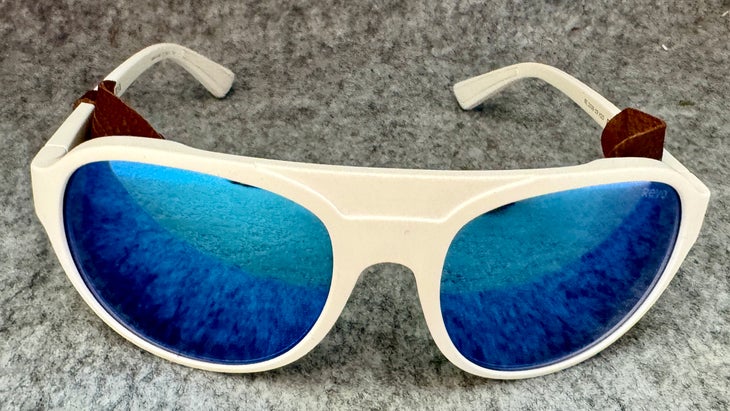
Best Glacier Glasses
Revo Himalaya
Lens: Polarized glass
Frame shape: Aviator
Fit: Medium to large
Pros and Cons
⊕ Incredible optic clarity
⊕ Removable side-eye covers
⊕ Durable frame material
⊗ So pricey, you’re not going to want to lose them
⊗ Glass lenses can feel heavy
Revo teamed up with climber and filmmaker Renan Ozturk to help design the Himalaya. These are stylish modern-day glacier glasses with a hint of retro charm that you can wear climbing a high-altitude peak or doing more casual, everyday outings. A removable leather side shield gives you sleek side-eye protection if you want it, or take it off if you’re not traversing glaciated terrain.
The lenses on the Himalaya are polarized crystal glass, offering the elevated visual clarity that only glass lenses can deliver. Our testers wore them skiing around Tahoe, climbing in the desert, and trout fishing local streams, and they earned high marks for performance and clarity in all of those activities, especially on snow and water. “The lenses protected my eyes like a windshield while skiing on a sunny spring day,” one tester said. The chunky frame and burly lenses have a solid go-ahead-and-try-to-break me vibe. One caveat: They’re heavier than other options.
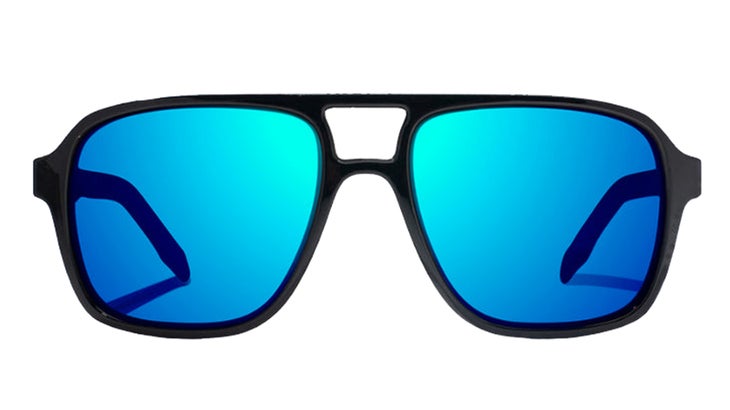
Best When On Water
Bajio 12 South
Lens: Polarized glass or polycarbonate
Frame shape: Rounded square
Fit: Medium to large
Pros and Cons
⊕ Cushy rubber temples and nose pad
⊕ Temples hinge out for custom fit
⊕ Ultra-clear, high definition polarized lenses
⊕ Available in a prescription lens
⊗ Heavy at 40 grams
Designed for saltwater fishing but versatile enough for everyday and multi-sport use, the Bajio 12 South sunglasses are packed with smart tech without looking, well, techy. They’re cool without trying too hard. And they stay put whether you’re running on the beach or casting a line.
High definition polarized lenses—which come in the polycarbonate we tested or a slightly pricier glass option—have a patented blue-light blocking technology that made our eyes feel rested even after a day of boating on Lake Tahoe in harsh sun. “These lenses are some of the clearest I’ve ever looked through,” one tester said. “They made everything sharper.”
The bridge and arms come with injection-molded rubber pieces for a soft touch, and flexible hinges at the temple made these some of the most comfortable shades in the test on a range of head sizes.
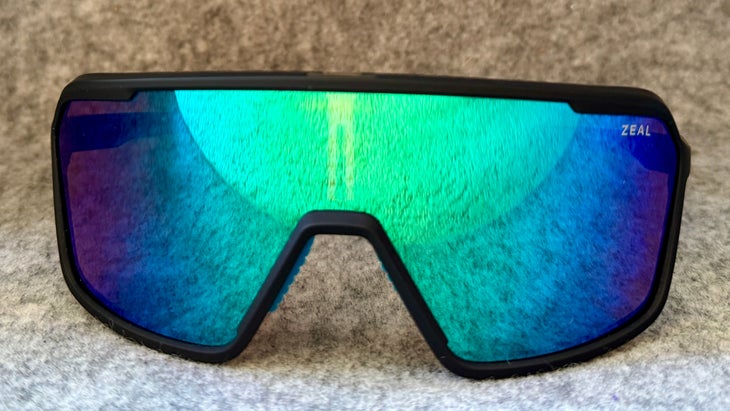
Best for Cycling
Zeal Harbinger
Lens: Comes in polarized and non-polarized options
Frame shape: Shield
Fit: Small to large
Pros and Cons
⊕ Lightweight and simple; not overbuilt
⊕ Universally appealing fit
⊕ Frame is made from a plant-based resin
⊗ Smudge easily
These were some of our favorite sunglasses of the test—an overall crowd pleaser. The Zeal Harbinger was designed for endurance sports like running, cycling, and ski touring. It’s lightweight and feels invisible on your face, with a comfortable, no-slide fit. If you’re into shields but don’t want a pair that takes up half your face, this is a nice in-between: big enough to protect your eyes from wind and sun but not so oversized that you look ridiculous and those with smaller faces can’t pull it off. Testers with a variety of head shapes unanimously approved of these glasses. The one lens was versatile enough to work well in bright sun and low-light conditions.
Testers wore these mountain biking in the Southwest and on a backcountry hut trip in the Sierra. The cyclists had the highest praise for the Harbingers. “These might be the best cycling glasses I’ve ever worn,” one said. “They fit perfectly with my helmet, offered ample peripheral vision, and never once fogged.” Only gripe: The lens is scratch and impact-resistant, but it easily showed smudges from oily sunscreen and greasy fingerprints. For $199, you can get a non-polarized lens; or upgrade to a polarized one for $249.
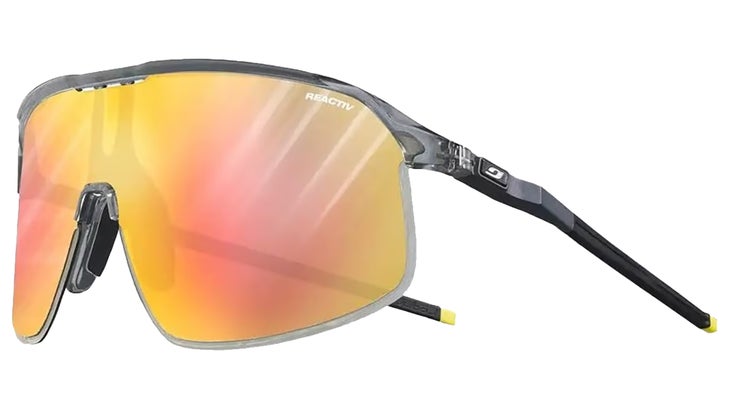
Best for Running
Julbo Density
$250 at Backcountry $170-250 at Julbo
Lens: Cylindrical photochromic
Frame shape: Shield
Fit: Large
Pros and Cons
⊕ Extremely minimalist feel considering the wide field of view
⊕ Pliable rubber temples don’t snag hair
⊕ Grippy rubber nose pad stays put
⊗ Looks huge on smaller faces
⊗ Feel fragile
These are the sunglasses you forget you’re wearing until you walk indoors. Even then, the transition lens adapts so shockingly well from bright light to dim darkness that you don’t need to take them off.
Our testers wore these in a ski-mo race, up a 12,000-foot peak in Yosemite, and while running and Nordic skiing over 100 collective miles. They are invisibly light—a mere 20 grams—with thin, delicate rubbery temples that one tester described as “reminiscent of bird bones.” Testers praised the full coverage that didn’t sacrifice venting, and one called them the “most fog-resistant sunglasses I’ve ever used.”
Testers repeatedly chose the Density (and even fought over who got to wear them) for late afternoon mountain bike rides, early morning trail runs, and ski touring on cloudy days. “This is the only pair of sunglasses I’ve used that I could put on starting a ski tour pre-dawn and wear into the middle of a bright April day, while never fogging—despite lots of uphill slogging,” tester Goran Lynch said.
If you’ve got a smaller face, check out Julbo’s Frequency ($145), which is similar to the Density in lens tech and lightweight feel but in a more diminutive frame size.
Read our full review of the Julbo Density.
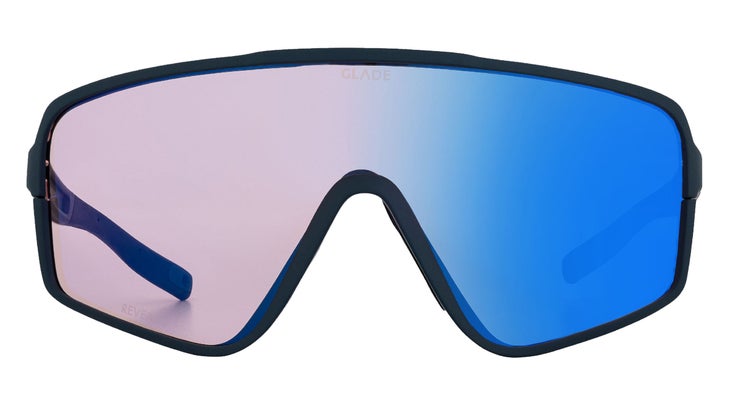
Best in Mixed Light
Glade Ramble
Lens: Cylindrical photochromic lens made from 50 percent recycled content
Frame shape: Full frame shield
Fit: Medium
Pros and Cons
⊕ Lightweight design
⊕ Ample ventilation
⊕ Comfortable nose bridge with no pressure points
⊗ A bit techy for everyday use
You know how some full-frame shield sunglasses look like overkill, as if you should only be allowed to wear them while racing bikes in Leadville or sky running in Chamonix? These are not those glasses. The Glade Ramble is built for sport, but has a laid back, under-the-radar vibe. “These are the non-obnoxious version of full coverage glasses,” wrote one tester, while another added: “They strike the sweet spot of good looks and functionality at the right price.” Hitting just under $100, the Ramble has a high-end feel without the sticker shock of pricier glasses.
Testers wore these while skiing Mount Shasta and on a weeklong ski touring trip in Lofoten, Norway, as well as during summer’s mountain biking window. They excelled in variable light conditions: The photochromic lenses transition from light to dark, which means when you’re moving between a forested area where the light is fickle and bright sun, your sunglasses magically adjust as needed to keep your vision clear and comfortable. “I unabashedly have a crush on these glasses,” said Tahoe tester Kate Shaw. This is the perfect shade for runners, cyclists, or skiers who prioritize lightweight, durable, style-forward gear.

Most Fun
Blenders Millenia X2
$33 at Backcountry $59 at Blenders
Lens: Polarized
Frame shape: Rounded square
Fit: Medium to large
Pros and Cons
⊕ Flashy and cool
⊕ Lightweight design at just 26 grams
⊗ Lenses were easily smudged with fingerprints
⊗ No rubber padding on temples or nose bridge makes them less comfortable than others
Who said sunglasses needed to be so serious? Blenders’ Millenia X2 have an “I’m just here for a good time” vibe. We tested the Citrus Blast color—a shiny cotton candy pink frame with a mirrored rose-gold lens—but these glasses come in more subdued colors, too, like black or silver.
Multiple testers said these were the sunglasses they picked for springtime après ski on the deck at Palisades Tahoe, but they held up well in sporting mode, too. “I ran and cross-country skied in these shades and was shocked at how clear the optics were,” one said. “They are equal parts stylish and functional.”
The tint of the polarized lens we tested was dynamic, perfect for bright sunny days, but not so dark that you couldn’t wear them as the sun was setting. The frames fit testers with medium to large faces best, but they’re not so oversized that they look ridiculous on smaller faces.
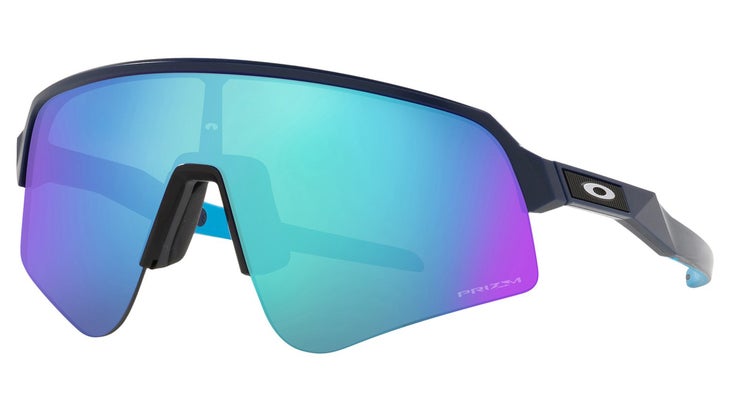
Best Ventilation
Oakley Sutro Lite Sweep
$202-222 at Backcountry $202 at Evo
Lens: Choose from 10 color options, including clear
Frame shape: Sporty shields
Fit: Small
Pros and Cons
⊕ Ultra light for endurance sports
⊕ No sweat-induced fogging
⊕ Massive rubber nose pads that stay put
⊗ Too sporty to wear casually
⊗ A little tight at the temples
For running, cycling, and other sweaty pursuits, the Oakley Sutro Lite Sweep was a true champ. “Great combo of ventilation and coverage for a hard training ride,” said tester Tristan Queen, who trained for the Leadville 100 in these shades. “Good airflow meant I wasn’t getting sweaty eye area syndrome.” (Yes, that’s a thing.)
In mixed lighting through forests or dimly lit roads, the lenses—which one tester called A+ quality—popped color and light without distortion. This is a slight, minimalist option for athletic types who’d rather not wear a massive shield but still want the wind and sun protection of a full-coverage shade.
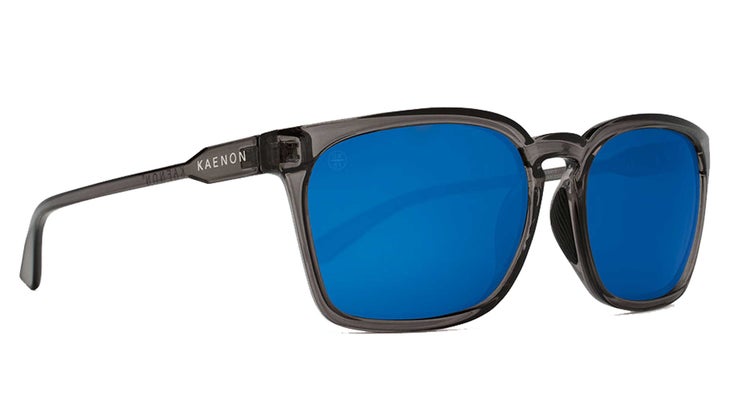
Best Casual Shade
Kaenon Ojai
Lens: Three polarized color options
Frame shape: Rounded square
Fit: Medium
Pros and Cons
⊕ Unscratchable lenses
⊕ Featherweight frame
⊕ Snug fit with no bounce
⊗ So light they feel like they could break easily
Beachgoers and casual runners looking for a light, sporty shade they can wear throughout the day need search no more. The Ojai hits this magical sweet spot: At $125, they’re high-end enough to have a lavish feel but not so pricy you’ll panic when they go missing. They’re also perfectly unisex and flattering on a wide range of face shapes and sizes.
These were among the lightest frames in the test (at just 24 grams) and felt breezy and whimsical while bike commuting through town and paddleboarding on a high-alpine lake. Runners reported minimal slipping and appreciated the lightweight feel. “This one takes skinny and light to a whole new level,” one tester said.
The Ojai has a boho, casual vibe, like you’re going wine tasting at a hip vineyard, but is sporty enough to pull off scrambling up a big peak. A keyhole bridge over the nose and integrated rubber nose pads make for a comfortable fit.
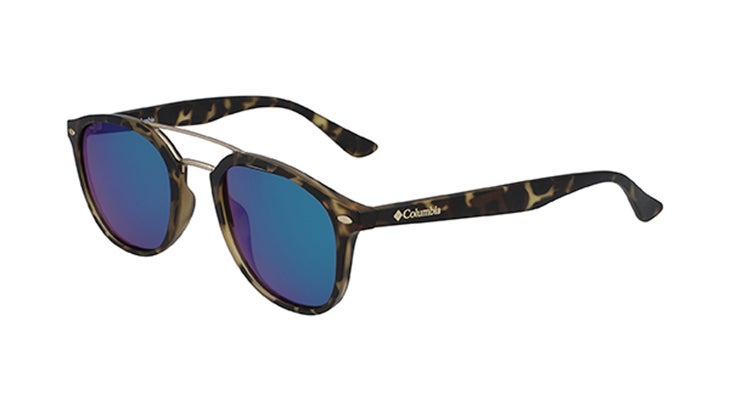
Paid Advertisement by Columbia
Columbia Firecamp Polarized Sunglasses ($65)
Columbia’s Firecamp Polarized Sunglasses are engineered to keep you protected no matter where the day takes you. The metal, double-bar bridge gives these sunglasses a sleek, modern look, while the lightweight design provides all-day comfort. And polarized lenses help reduce glare and eyestrain so you can focus on what matters most.
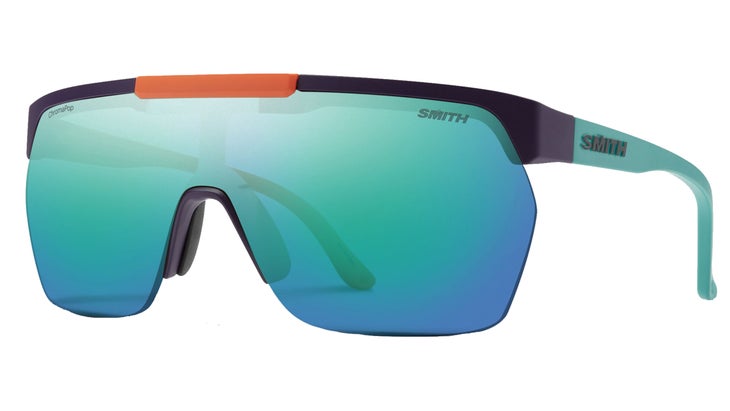
Most Versatile
Smith XC Sunglasses
$175 at REI $175 at Backcountry
Lens: Polarized in three color options
Frame shape: Flip-up shield
Fit: Medium/large
Pros and Cons
⊕ Highly breathable
⊕ Versatile
⊗ The look isn’t for everyone
Smith went back to its 1983-84 collection to find inspiration for these one-piece flip-up sunglasses. Why, you ask, would anyone need this feature? Because sometimes you want your glasses securely on your face with the arms over your ears but you don’t want the lenses in front of your eyes.
Case in point: tester Jakob Schiller took these glasses for an early-morning run in Mexico City and was able to flip the lenses up until the sun peeked over the buildings and then flip them down to create needed sun protection after dawn. While the glasses sat far enough off the face to breathe well, testers said sometimes it was nice to flip the lenses up while exercising in order to get a full blast of fresh air.
Yes, the glasses look absolutely ridiculous with the lenses flipped up, but who cares. These days, we’re all out there wearing bright colors, form-fitting tights, and any number of funny-looking gear in order to have fun and feel good.

Best Under $25
Goodr OG
$25 at REI $16-25 at Backcountry
Lens: Polarized, in 13 color options
Frame shape: Sporty square
Fit: Narrow/medium
Pros and Cons
⊕ Comfortable
⊕ Complete protection that’s affordable
⊗ Lenses difficult to keep clean
⊗ Lenses easily damaged
The OG is Goodr’s best-selling style, and for good reason: Their frame is almost universally flattering, they come in 25-plus colorways, and ring up at a mere $25.
“I don’t usually race in sunglasses, but I wore these in the Berlin Marathon,” said tester Jacqueline de Berry. “I thought for sure I would get annoyed by them toward the end of the race and want to toss them away—and I wouldn’t even have minded due to how affordable they are. But they were so comfortable I wore them to the finish, and they helped me score a new PR [personal record].” Hunsucker, who has logged over 1,000 miles in the OGs, points out that they’re best when it’s super sunny. “They can affect your depth perception in the shade, so I only wear them on sunny, non-technical trails,” he says.
They may not be as high-tech as other lenses, but they’re lightweight, don’t budge, and offer plenty of eye protection for an attractive price. Any athlete with a penchant for losing or damaging sunglasses should consider having a pair or two of Goodrs on hand. —Ashley Mateo
How to Choose Sunglasses
Trying on sunglasses in person is helpful to make sure they fit and flatter your face shape and size. These days, a lot of sunglass brands also offer virtual try-on features online. Your face shape can determine what works best for you. Larger, rounder faces tend to work best with oversized or shield glasses; smaller faces might be more suited to round or wayfarer styles.
Consider what you need from your sunglasses before you buy. Are you wearing them for high-motion sports like cycling or running, or for water sports like fishing or paddling? Or do you need them for everyday use, like driving or walking? Some versatile shades can do all of those things, but others are more specialized. And if you plan to use your sunglasses in low-light conditions, consider a lens suited for that or an interchangeable lens that you can swap out based on the light.
In terms of lenses, you have a few options there as well. Polycarbonate lenses are lighter, more durable, and shatterproof, usually designed for high-output sports like running, biking, or ski touring. Glass lenses tend to have superior optic quality but are heavier and can be easier to break. If you plan to wear the glasses on water or snow, spring for a polarized lens, which is usually pricier but helps cut glare significantly better than non-polarized options. Some glasses come with options for lens tint, which is really up to personal preference and where you plan to use the glasses most of the time. Yellow or pink lenses will help boost color and can work well in low-light or on snow. Green and blue lenses cut glare. Gray lenses function well in both low-light and full-sun conditions, while brown lenses can improve contrast.
How We Test
- Number of testers: 11
- Number of products tested: 81 in total (51 in a previous test and 30 in this most recent test)
- Countries sunglasses were tested in: U.S., Canada, Mexico, Georgia, Turkey, Japan, Norway, Austria, Italy, Chile.
- Longest distance Nordic skied during the test: 32 miles
- Number of hut trips taken while testing: 4
- Number of sunglasses that fogged: 2
- Number of sunglasses we broke: 3
To determine our favorite all-around sunglasses of the year, a group of 11 Lake Tahoe, California-based testers were handed boxes of around five to six sunglasses from different brands and told to wear them during their normal routines outside. They exchanged them after a few weeks with another set—eventually rotating through as many as possible. Testing goes on year-round, to accommodate all the seasons, with new rounds of products tested several times each year.
Testers—with a wide range of backgrounds, ages, outdoor interests, and face shapes—put the shades through the ringer in both winter and summer conditions, from low-light blizzards to mid-day July sun and while doing everything from running ultramarathons to multi-day river trips. We wore these sunglasses while fishing in Mexico, backcountry skiing in the Caucasus Mountains, powder hunting in Japan and Utah, and daily runs, bike rides, and everyday outings around the Lake Tahoe area. Testers were chosen based on a diversity of recreational pursuits, but mostly because they’re opinionated about gear and they get outside regularly. Once they’d sufficiently wear-tested products, they filled out in-depth feedback forms where they reviewed characteristics like lens quality, fit, features, and durability. Testers ranked the sunglasses on a scale of one to five, and the ones chosen here represent the products that scored consistently the highest.
Meet Our Testers
All of our testers are outdoorsy, well-traveled, and opinionated folks who call the Lake Tahoe area home. Key testers quoted here include ski shop employee Kim Olenic, Arcade Belts cofounder Tristan Queen, Peak Design graphic designer Molly Street, and robotics engineer Goran Lynch, among others.
The post The 16 Best Sunglasses for Every Outdoor Activity appeared first on Outside Online.















